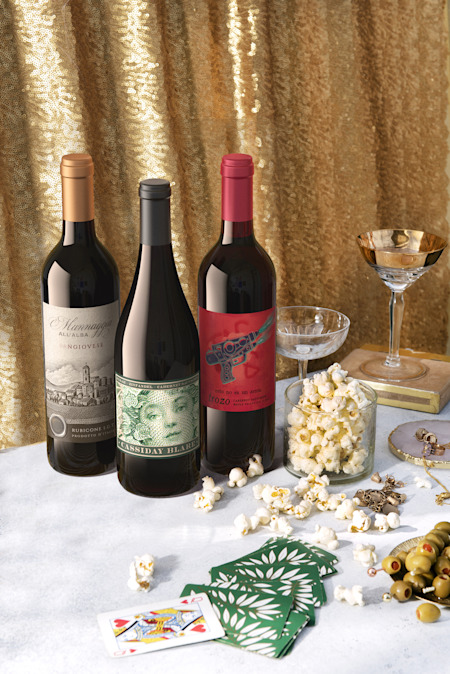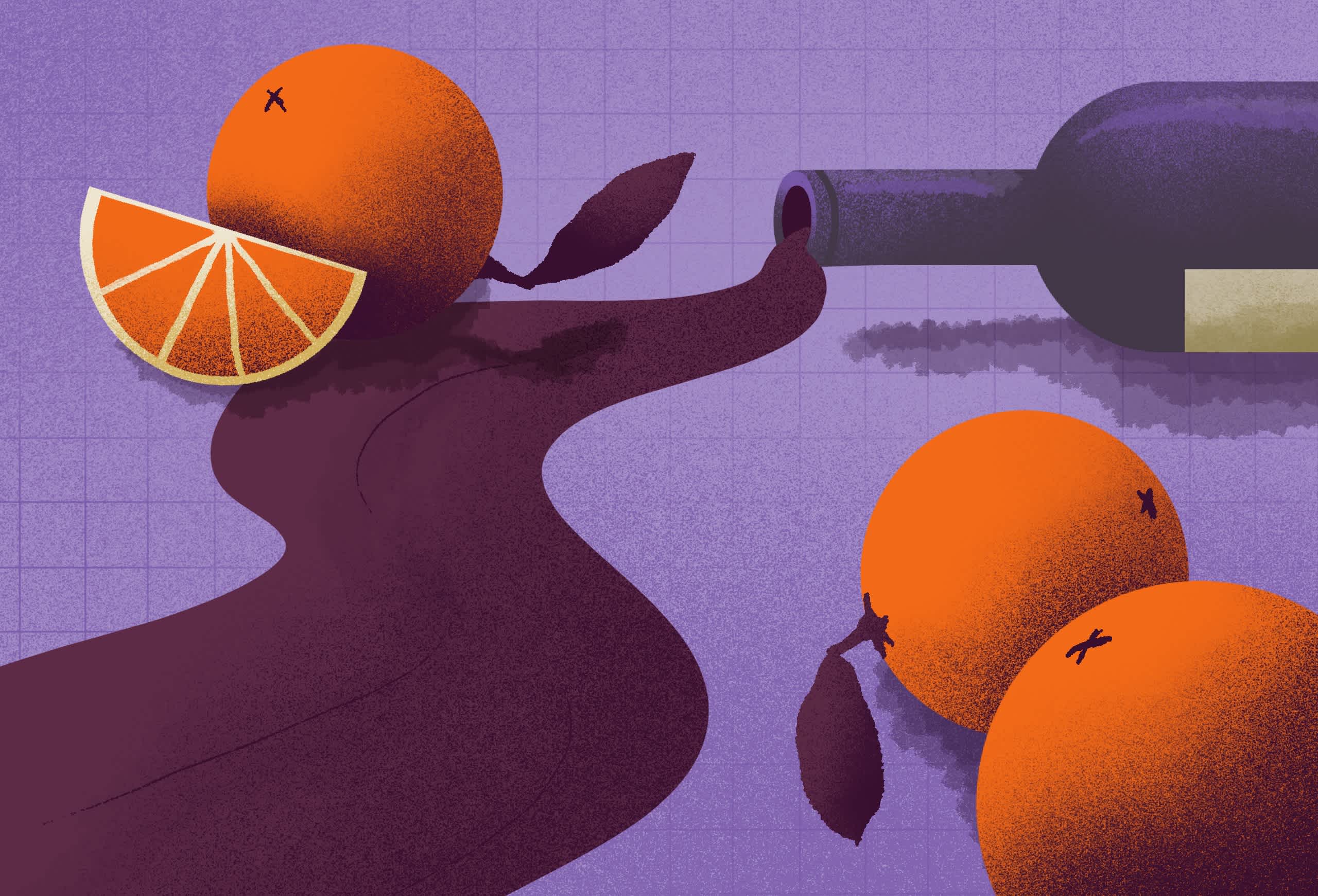What Are Common Wine Flavors?
Learn about common wine flavors, how to identify them, and where they come from
One of the delights of opening a new bottle of wine is seeing what's inside. Not literally of course. Seeing the color matters, to be sure, but discovering the aromas that lie inside a bottle is what really gets a wine lover excited.
Each wine is unique, no matter if it is red wine, white wine, another varietal, or where it comes from unique notes can be found. Pinot Noir from Chile tends to express a touch of eucalyptus, whereas Pinot Noir from Burgundy wine often has an earthy minerality. Both showcase fruit flavor as well, but it's these singular terroir-driven notes that really get wine tasters excited.
But we all taste and smell differently. Our experience drives our ability to "accurately" describe wine. The problem with accuracy in the description of a wine is that putting words to smells is one of the most difficult things your brain can do. So know that there is a steep learning curve when tasting wines and describing what you encounter.
You can always refer to wines by metaphor. For example: "This Malbec is a dancer, moving to the rhythm of Argentina's streetscape tango. It's all energy and poise. etc."
Or you could utilize the aroma wheel (a wheel listing many "typical" flavors found in wine) that was developed by Ann C. Noble at the University of California-Davis in the '80s. It has been massively influential in setting a universal language for talking about wine flavor.
In this guide to wine flavors and aromas, we are going to focus on the aroma wheel and walk you through primary, secondary, and tertiary flavors. This list is by no means comprehensive but focuses on the most common flavors you might run into.

Sign up for the Club Today
Join Firstleaf to taste delicious wines from all over the world and learn more about these grapes. The club has featured amazing examples, take the quiz to get the pairings for your individual palate.
Take Our QuizIN THIS ARTICLE:
Where Does Wine Flavor Come From?
Wine is often described by using other notes. Drinkers often resort to the smells of fruits and flowers. Wine grapes themselves do not taste like cherry or white flowers, so why would my Cabernet Franc? Where do the flavors come from?
Wine flavor compounds and flavor precursors (two distinct sets of proto-aromas) combine and interact with other compounds and enzymes in the winemaking process. These building blocks fuse and aromatize, allowing us to smell complex flavors that would be imperceptible when tasting a grape.
This is a burgeoning science and not everything is known yet about how flavor compounds develop in different types of wine grapes.
Primary Wine Flavors
Primary flavors are what you typically think about when you drink wine. They are the fruity or floral, spicy, or earthy aromas that signify a well made and healthy bottle of wine. We are going to break down the biggest categories with some examples for you so you can easily spot flavors the next time you open a bottle of wine. Fruit flavors make up the majority of the primary aromas, but there are other categories.
Floral Notes
This flavor category includes but is not limited to: white flowers (like honeysuckle and orange blossom), roses, violets, or geraniums.
White flowers are most often found in white wines. Gewürztraminer and Muscat are both intensely floral grapes and full of white flower flavors. Violets and roses are notes that can be smelled in some of the best examples of red wine. Merlot, for instance, can showcase violets, while Grenache can have hints of lavender or roses.
Citrus
This flavor category includes but is not limited to: lemon, lime, tangerine, grapefruit, and orange.
Citrus flavors are most often found in white wines like Chardonnay, Viognier, and Pinot Grigio among many others. These wines can exhibit varying concentrations, levels of bitterness, and types of citrus. Some wines are described as tasting like "grapefruit pith" instead of grapefruit peel or grapefruit juice. The pith is the bitter layer under the skin, and it can be an apt descriptor.
Tropical Fruit
This flavor category includes but is not limited to: pineapple, mango, kiwi, lychee, banana, passionfruit, and papaya.
These flavors are typically seen in white wines coming from warm regions that have achieved a high amount of ripeness.
Tree Fruit
This flavor category includes but is not limited to: red and green apple, peach, pear, and apricot.
Some of the flavors in this category can also be referred to as "stone fruit" (fruits with a pit in the middle instead of small seeds. These flavors are generally seen as fresh and can be anywhere from crisp green apple in a Chablis to a syrupy peach flavor in Chardonnay from a warm climate like Australia.
Berries/Red Fruit
This flavor category includes but is not limited to: raspberry, black currants (also called cassis), blackberry, blueberry, cranberry, strawberry, and red and black cherry.
These notes are many tasters go-to descriptions. In red wines, the fruit can is more easily identified than earthy qualities. Whether you have a strawberry and bubblegum laced Beaujolais Noveau or a big, tannic Syrah from the Rhône that tastes like dark red fruit these notes can be more accessible to new wine drinkers. If you are looking for a place to start describing a wine try the red fruits.
Dried Fruit
This flavor category includes but is not limited to: figs, dates, raisins, and jam.
Some of the notes feel more stewed. You can see this come through in Zinfandels and Cabernet Sauvignon from warm regions in California. If you have a wine tasting like it was stewed with jam or figs this is generally a sign it should be enjoyed young unless it is a vintage fortified wine or another wine with high enough acidity to counter the oxidative process.
Spices & Fresh Herbs
This flavor category includes but is not limited to: grass, bell pepper, eucalyptus, thyme, mint, red, white, and black pepper,
These spices and vegetal notes can be found in many red and white wines from all over the world. Shiraz from Australia can be peppery, young, ripe Cabernet can taste like bell pepper, and New Zealand Sauvignon Blanc can taste like freshly mown grass. The possibilities are vast and fascinating.
Earth
This flavor category includes but is not limited to: dust, wet soil, gravel, slate, chalk, mushroom, and petroleum.
Earth flavors are complex and can either be primary flavors or tertiary flavors that come from the aging process. Young, poorly made Riesling can taste like rocks, sugar, and gasoline, but some of the best-aged examples can feature similar flavors that feel entirely different on your palate.

Shop Award-Winning Wines
Try a new flavor of wine or purchase an old favorite in our wine store. Search by color, varietal, region, and more.
Shop Wines NowSecondary Wine Flavors
Secondary flavors come from the winemaking process. To be clear, primary flavors form during the winemaking process as well, but come from the grape. Secondary flavors are imparted by the winemaker.
This flavor category includes but is not limited to: oak, yeast, toast, caramel, butter, cream, honey, chocolate, vanilla, coffee, and smoke among others.
Many of these oaky flavors like oak, chocolate, vanilla, coffee, and smoke can come from the barrels used to age wine. Most of these flavors come along with tannins, but tannins should not be confused as a flavor. Tannin compounds are flavorless.
Yeasty, bready notes typically come from contact with the lees in sparkling wine production like Champagne or Cava.
Creamy, buttery tastes and textures come from malolactic fermentation, a process where bacteria convert malic acid into lactic acid. This is most easily identified in a creamy, California Chardonnay.
Tertiary Flavors
Tertiary wine flavors come from aging wine. Some start to develop quickly but most come with time. The aroma compounds may seem similar to some in the primary and secondary camps, but in the context of old wine, they are different.
Due to the sheer volume of bottles that have survived into old age, you will most likely encounter these flavors in examples fromBordeaux or Burgundy in France, Rioja or Ribera del Duero in Spain, Barolo or Chianti in Italy, and Port or Madiera in Portugal.
This flavor category includes but is not limited to: leather, dried fruit, forest floor, animal (charcuterie or wild animal notes), nuts, coffee, and more.
Wine Flavor Faults
The final group of semi-common aroma compounds are wine faults. These are notes we will break down individually and why they happen:
Mouse: this comes from wine interacting with Brettanomyces yeast. Once noticed it is almost impossible to drink more of the wine. This yeast can also cause flavors that taste like band-aid and manure.
Cork Taint: also known as TCA. When someone describes a wine as corked what they mean is the smell of wet dog, musty basement, and moldy cardboard. Once you smell it you can't forget or mistake it again.
Sulfur: another byproduct of fermentation caused by chemical compounds called mercaptans that interact with certain strains of yeast to emit an odor described as sulfur, gunflint, burnt rubber, or bad eggs.
Nail Polish Remover: this is caused by volatile acidity, another reaction during the fermentation process.

Take Our Wine Quiz
Take our short wine quiz and discover award-winning wines that you'll love.
Get StartedIN THIS ARTICLE

WinePrint™ by Firstleaf
Are you looking to learn more about your wine preferences? Check out our Wine Print for an in-depth look at your personal tasting profile. Discover your favorite wines, varietals, regions, and tasting notes and get personalized recommendations wherever you are.
Learn More